Living In Uncertain Times: A Yoga Practice to Calm Anxiety and Stress
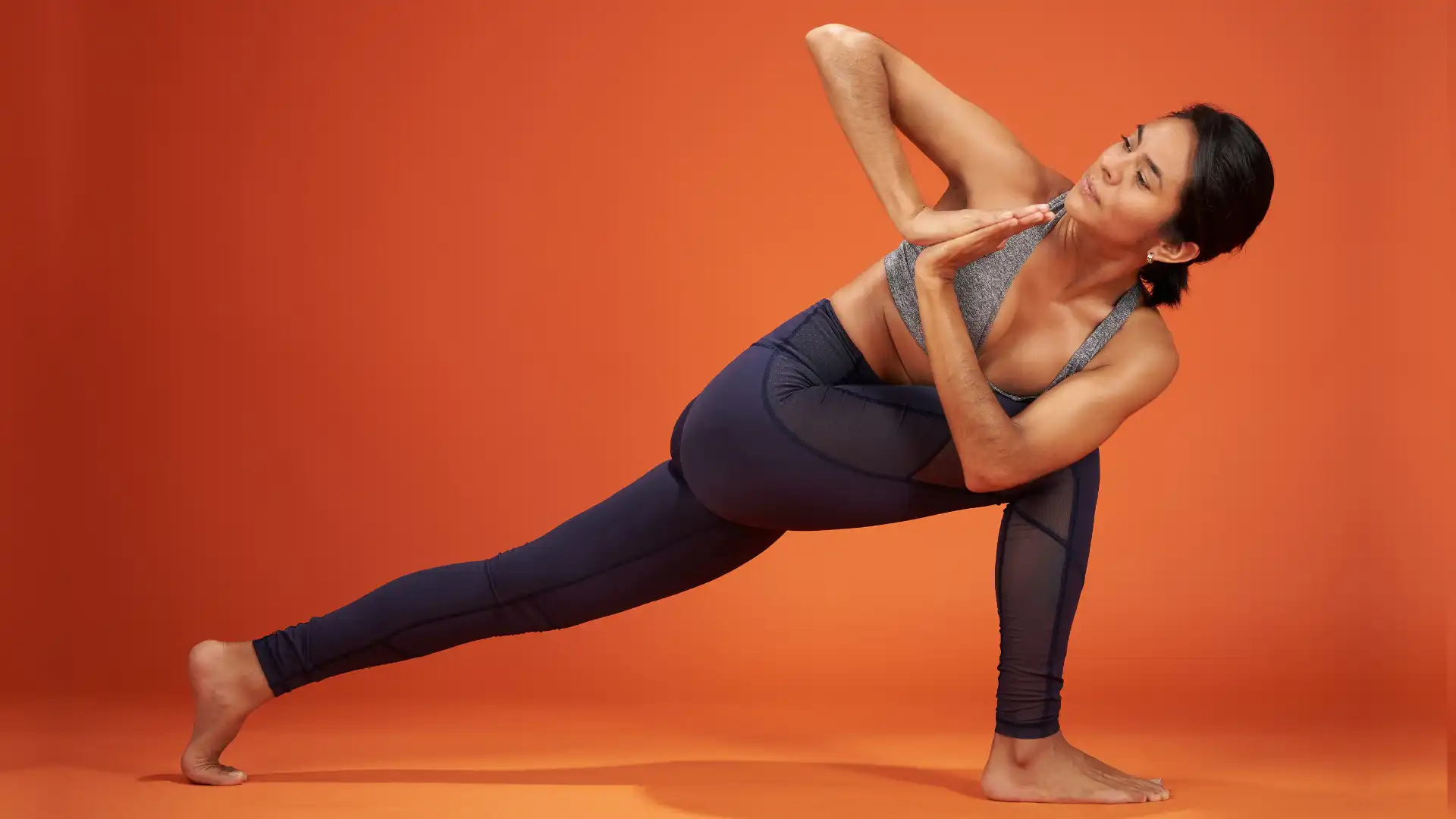
For most of the country, it’s been over a month of living under some version of a quarantine order in hopes of slowing the spread of COVID-19. Although this respiratory disease has hit some areas of the country harder than others, no one is immune to the stress and uncertainty caused by a worldwide pandemic.
The Centers for Disease Control and Prevention says that both adults and children can experience the stressful effects of an infectious disease outbreak. (1) These symptoms may include fear and worry about your own health or the health of those close to you, difficulty concentrating, changes to eating and sleeping habits, and increased use of alcohol or other drugs.
Holistic Approach To Reducing Anxiety and Stress
- Maintain a consistent sleep schedule. Too little or too much sleep will disrupt your circadian rhythms. A circadian rhythm is your body’s natural, internal process that regulates when you sleep, wake, and eat.
- Reduce your news consumption. Rather than have the news on continuously, allow yourself a set time each day to catch up on world events. Set a timer if necessary.
- Reduce or avoid food and drinks that activate your nervous system. This includes alcohol, caffeine, processed foods, and sugar.
- Boost your immunity with fresh vegetables and fruits. Some supplements, such as Omega-3 fatty acids or B vitamins, may be helpful. Be sure to check with your doctor before starting any new supplements.
- Regular aerobic exercise will keep your body healthy and your mind off current events. Aerobic activity can be as simple as a walk in your neighborhood or one of the many online exercise opportunities available.
- Spend time outside. If you are currently under a quarantine order and unable to walk or hike in a local park, walking barefoot in your own yard or simply sitting outside can offer similar benefits.
- Stay connected socially. Whether that means via social media, Zoom meetings, or an old-fashioned phone call, be sure to check in regularly with those you care about.
- Seek professional treatment if necessary. Therapy or counseling may be needed to help you through a difficult time. Many doctors are now offering tele appointments to their patients.
- Along with aerobic activity, meditation, and mindfulness practices are also encouraged to reduce stress and anxiety.
Gentle Yoga Practice To Calm Anxiety and Stress
Nadi Shodhana (Alternate Nostril Breathing)
Alternate Nostril Breathing can reduce anxiety, relax both your mind and your body, as well as promote deeper and more efficient breathing.
- Begin in a comfortable seated position.
- Curl your index and middle finger of your right hand down so that they touch the palm of your hand.
- Place your ring finger over your left nostril and inhale slowly through your right nostril.
- Once you complete your inhalation, close off your right nostril with your thumb.
- Release your ring finger, open up your left nostril, and slowly exhale.
- Reverse the pattern, beginning with your right nostril closed and inhale through the left nostril. Then close off the left nostril and exhale through the right nostril.
- Repeat this pattern for three to five minutes.
Balasana (Child’s Pose): Go to Stress Reducing Pose
Child’s Pose can ease stress and fatigue and provide a way to ground yourself when you feel anxious or stressed.
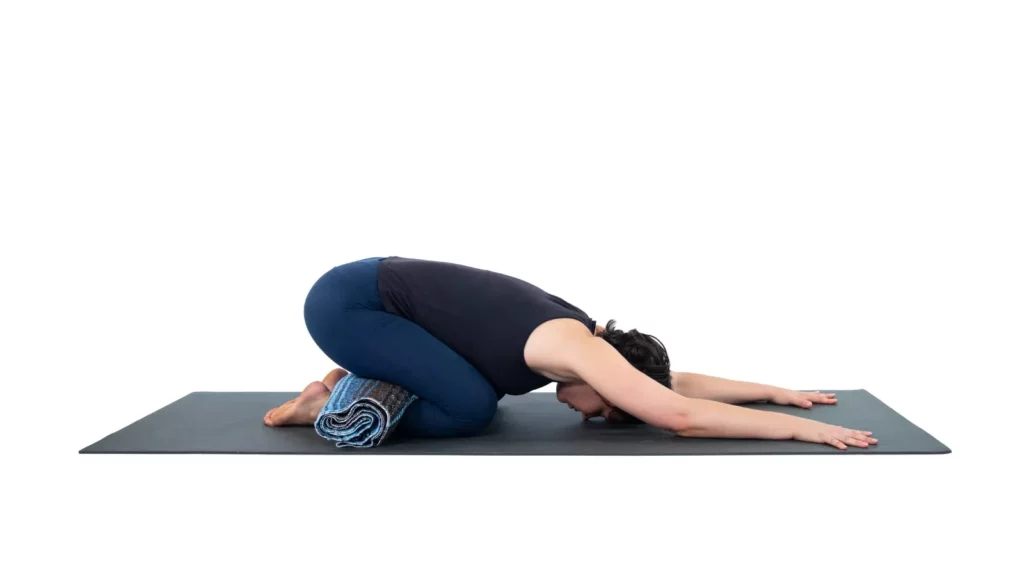
- Separate your knees slightly from Bharmanasana (Tabletop Pose) on your hands and knees, making a V shape with your legs.
- Shift your hips back toward your heels.
- Relax your forehead onto your yoga mat, taking smooth deep breaths.
- If you have discomfort in your knees, place a rolled-up blanket behind your knees.
- Additionally, you can try placing a bolster or folded blankets under your belly for additional support and comfort.
Marjaryasana/Bitilasana (Cat/Cow Pose)
Cat/ Cow is usually practiced as a gentle flow between spinal extension and spinal flexion. Practicing Cat/Cow is a gentle way to begin moving your body without creating additional tension or increased heart rate, as you may experience with a more traditional vinyasa flow. Cat/Cow can also alleviate back pain caused by prolonged sitting or bad posture.
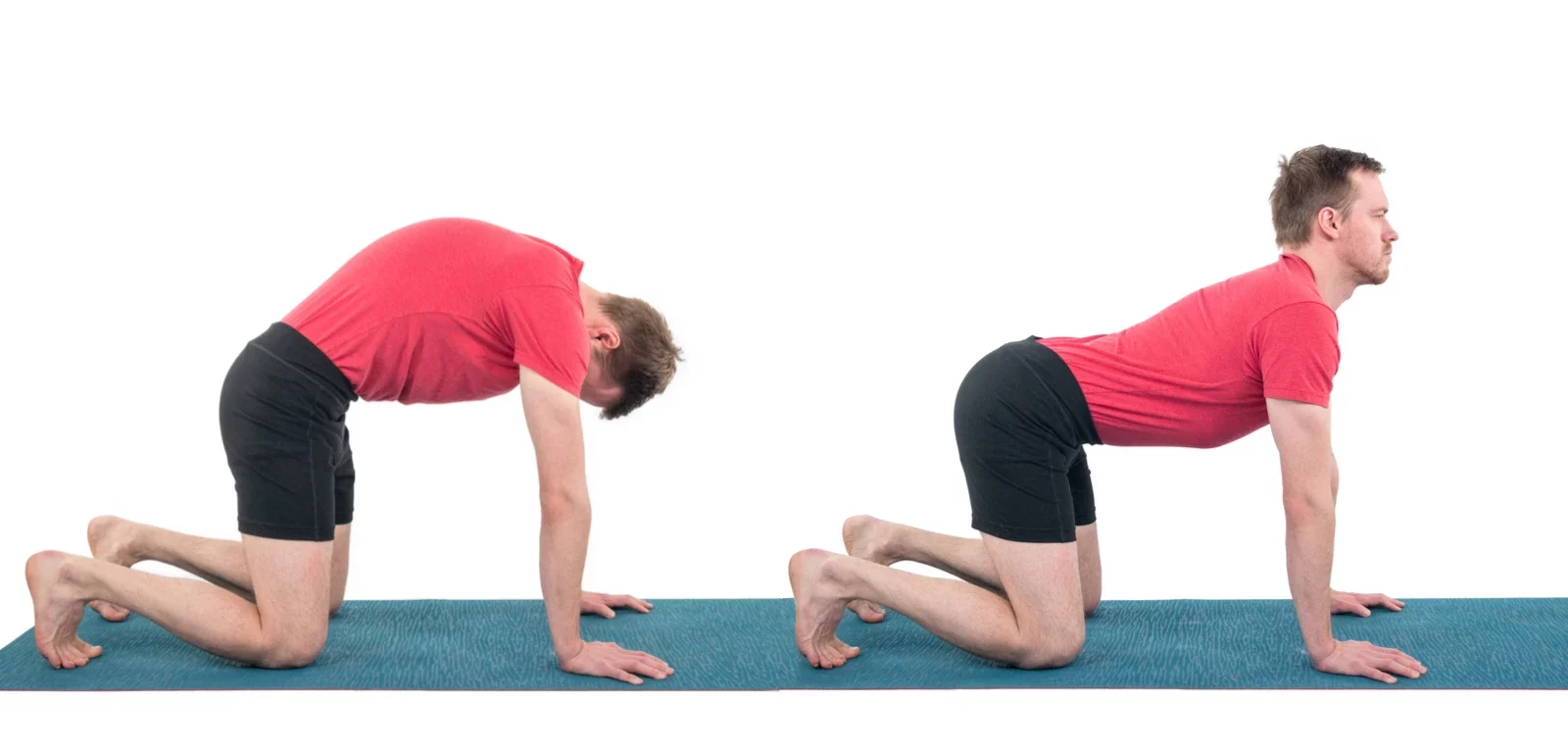
- Starting in Tabletop Pose, with your hands under your shoulders and your knees in line with your hips, spread your fingers wide.
- On an inhalation, allow your belly to drop toward the ground, arch your back, and gaze either forward or slightly upward.
- On your exhalation, round your back as if you were a mad cat, and gaze toward your belly or between your knees.
- Repeat for three to five rounds.
Parivrtta Anjaneyasana (Revolved Crescent Lunge)
Revolved Crescent Lunge will mobilize your upper back, combat poor posture, open your chest, and leave you feeling refreshed and energized. 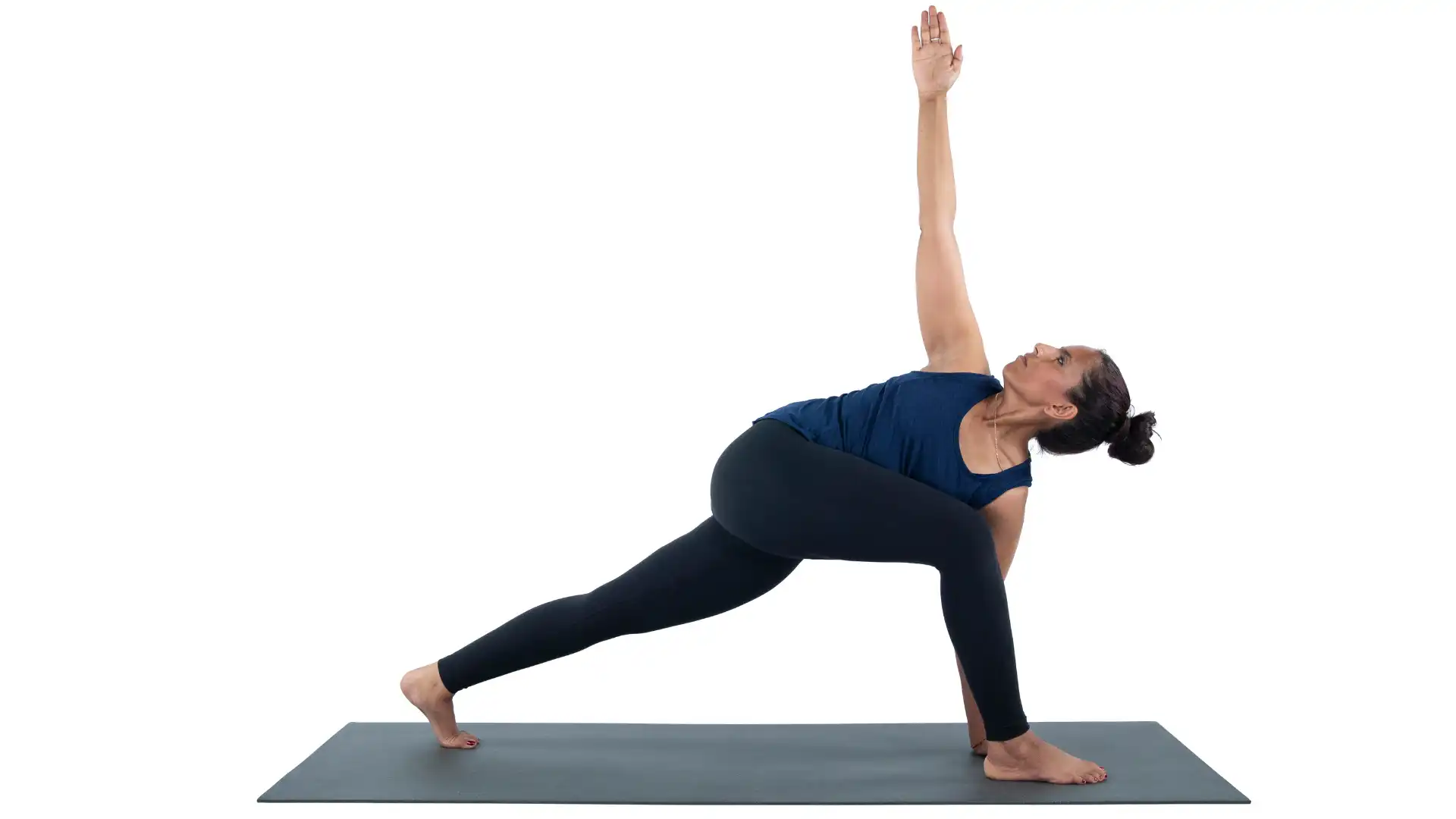
- From Adho Mukha Svanasana (Downward Facing Dog Pose), step your right foot forward between your hands to a lunge position. Alternatively, you can step your right foot forward from the Tabletop Pose on your hands and knees, keeping your back knee down for a kneeling lunge position.
- Place your left hand flat on the floor and raise your right arm high, opening your chest toward your right knee.
- Reach your right arm toward the ceiling.
- Hold for approximately three breaths.
- Repeat on the left side.
Prasarita Padottanasana (Wide-Legged Standing Forward Bend Pose)
Forward folds, in general, are calming and can help reduce fatigue and, in certain situations, can help alleviate headaches. This standing pose will also stretch the back of the body, which will help alleviate low back pain from poor posture or extended sitting and lying down.
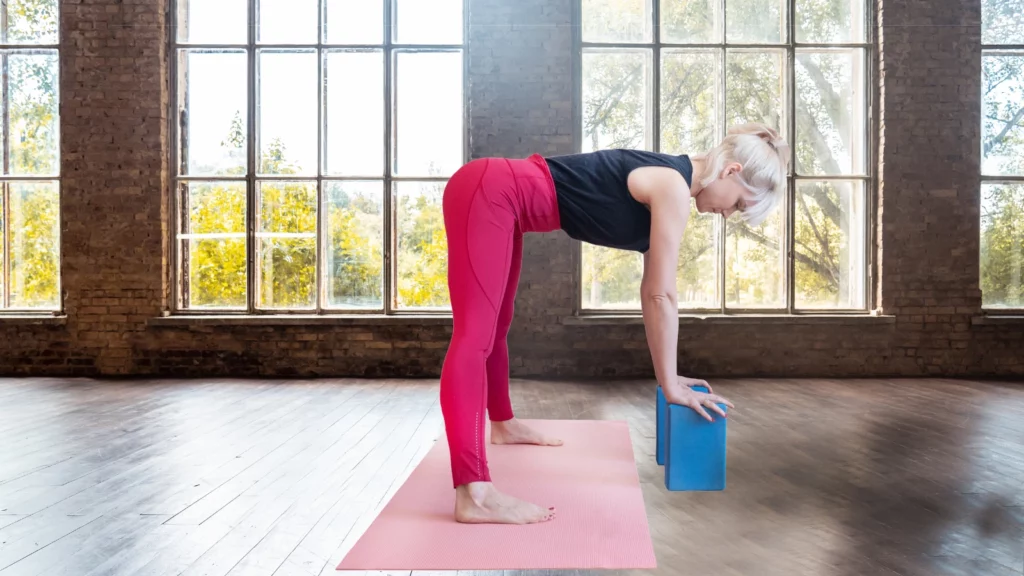
- Begin in Tadasana (Mountain Pose) at the front end of your mat.
- Step one foot back and turn the toes of both your feet toward the long edge of your mat. Your legs should be wider than your hips, with your feet parallel to each other.
- Place your hands on your hips, and maintaining the length in your torso, hinge forward from your hips, not from your waist.
- Place your hands on the floor or on yoga blocks for support.
- Lengthen through the backs of your legs, pushing your hips toward the ceiling.
- Stay in the pose up to one minute, taking slow deep breaths.
- When you are ready to come out of Wide-Legged Standing Forward Bend Pose, bend your knees and place your hands on your hips or your thighs.
- On an inhalation, lift your torso back to an upright position.
- Inverted poses can elevate your blood pressure. Step back into Child’s Pose for a few breaths after completing your Wide-Legged Standing Forward Bend Pose.
Viparita Karani (Legs Up the Wall) To reduce stress and Anxiety
Legs Up the Wall allows your entire body to relax and can help your mind to become quiet. This pose can also help re-energize you when you are feeling unmotivated or depressed.
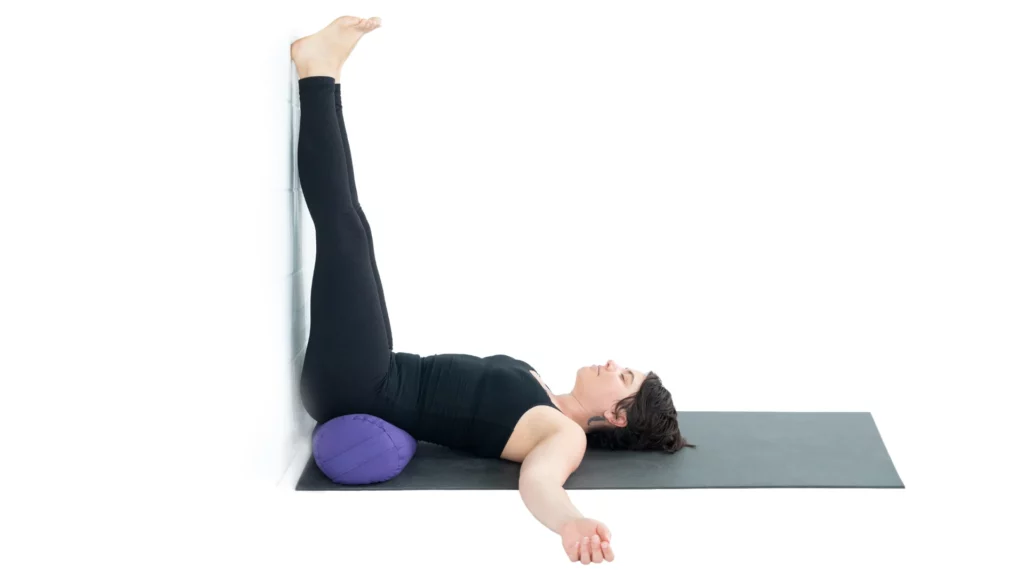
- Place your yoga mat with the short side against an empty flat wall.
- Lie on either side of your body, with your knees curled toward your chest and your bottom touching the wall.
- Swing your legs up and onto the wall, with your legs extending toward the ceiling.
- Be sure your bottom, back of your legs, and heels are supported on the wall. If your buttocks are lifting off the floor and low back is rounding into the floor, scoot a few inches away from the wall so that your buttocks can rest on the floor.
- An eye pillow may help with relaxation in this pose.
- Stay here for five minutes or as long as your time allows.
 Jennifer Williams-Fields E-RYT 200 is passionate about writing, yoga, traveling, public speaking, and being a fabulous single momma to six super kids. Doing it all at one time, however, is her great struggle. She has been teaching yoga since 2005 and writing since she first picked up a crayon. Although her life is a sort of organized chaos, she loves every minute of the craziness and is grateful for all she’s learned along the way. Her first book, “Creating A Joyful Life: The Lessons I Learned From Yoga and My Mom,” is now available on Amazon. She has had her essays featured on Yahoo! and Dr. Oz The Good Life. She is a regular writer for Elephant Journal Magazine, Your Tango, and YogaUOnline. See more from Jennifer at jenniferwilliamsfields.com.
Jennifer Williams-Fields E-RYT 200 is passionate about writing, yoga, traveling, public speaking, and being a fabulous single momma to six super kids. Doing it all at one time, however, is her great struggle. She has been teaching yoga since 2005 and writing since she first picked up a crayon. Although her life is a sort of organized chaos, she loves every minute of the craziness and is grateful for all she’s learned along the way. Her first book, “Creating A Joyful Life: The Lessons I Learned From Yoga and My Mom,” is now available on Amazon. She has had her essays featured on Yahoo! and Dr. Oz The Good Life. She is a regular writer for Elephant Journal Magazine, Your Tango, and YogaUOnline. See more from Jennifer at jenniferwilliamsfields.com.
Also, read...
Fascia and the Vagus Nerve: Healing from the Inside Out
What Your Body Tells You Can Protect You From Stress, Study Suggests
Related courses
Breath as Medicine: Yogic Breathing for Vital Aging
Yoga and Myofascial Release: Releasing Chronic Tension with the Bodymind Ballwork Method
Yoga and Detoxification: Tips for Stimulating Lymphatic Health
- https://www.cdc.gov/coronavirus/2019-ncov/daily-life-coping/managing-stress-anxiety.html





